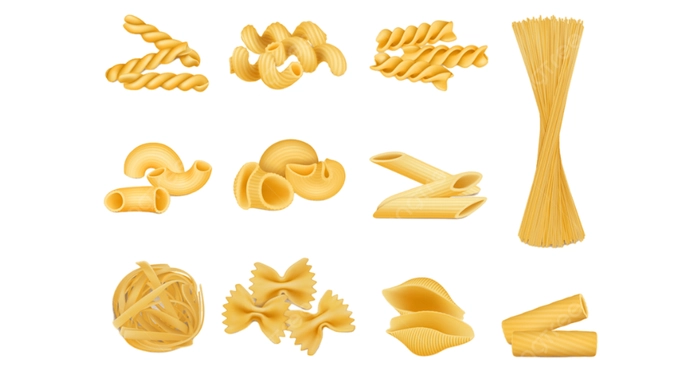Pasta, a beloved staple in kitchens around the world, is more than just a delicious meal option; it is a versatile ingredient that can be adapted to fit various dietary needs and culinary preferences. This article delves into the overview of pasta, its nutritional value, health benefits, recommended daily intake, and its uses in everyday life.
Overview of Pasta
Pasta has a rich history that dates back to ancient civilizations, with evidence of noodle-like foods found in Etruscan tombs from the 4th century BC. While popular lore suggests that Marco Polo introduced pasta to Italy from China, its origins are much older and more complex. Today, pasta comes in numerous shapes and sizes, ranging from traditional wheat-based varieties to gluten-free options made from legumes and vegetables
Pasta is primarily made from durum wheat semolina, which gives it a firm texture when cooked. It can be categorized into two main types: fresh and dried. Fresh pasta is typically softer and cooks faster, while dried pasta has a longer shelf life and is more commonly found in grocery stores.
Nutritional Value of Pasta
Pasta is primarily composed of carbohydrates, making it an excellent source of energy. The nutritional content can vary based on the type of pasta chosen:
- White Pasta: A 2-ounce serving contains approximately 200 calories, 43 grams of carbohydrates, 7 grams of protein, and 3 grams of fiber.
- Whole Wheat Pasta: This variety is richer in nutrients, providing about 180 calories, 39 grams of carbohydrates, 8 grams of protein, and 7 grams of fiber per 2-ounce serving.
- Chickpea Pasta: A great gluten-free alternative, it contains around 190 calories, 35 grams of carbohydrates, 11 grams of protein, and 8 grams of fiber.
- Red Lentil Pasta: Also gluten-free, this option has about 180 calories, 34 grams of carbohydrates, 13 grams of protein, and 6 grams of fiber per serving.
Health Benefits of Pasta
Pasta often faces criticism for being a carbohydrate-rich food, but recent research highlights its health benefits:
- Sustained Energy: The complex carbohydrates in pasta provide a steady release of energy, making it ideal for fueling physical activity and mental focus.
- Low Sodium and Cholesterol-Free: Pasta is naturally low in sodium and contains no cholesterol, making it a heart-healthy choice.
- Rich in Essential Nutrients: Enriched pasta varieties are fortified with iron and B-vitamins, including folic acid, which is crucial for pregnant women and supports overall health.
- Supports Digestive Health: Whole grain and legume-based pastas are high in dietary fiber, which aids digestion and promotes a feeling of fullness, potentially assisting in weight management.
- Cognitive Benefits: Studies suggest that diets rich in pasta, particularly within the Mediterranean framework, may protect against cognitive decline in older adults.
Recommended Daily Intake
The recommended daily intake of pasta can vary based on individual dietary needs, activity levels, and overall health goals. However, general guidelines suggest that carbohydrates should make up about 45-65% of total daily calories. For an average adult, this translates to approximately 6-8 servings of grains per day, with pasta being a suitable option.
A standard serving of pasta is typically considered to be 2 ounces of dry pasta, which expands to about 1 cup when cooked. Pairing pasta with lean proteins and vegetables can create a balanced meal that meets nutritional needs while satisfying hunger.
Uses of Pasta in Daily Life
Pasta is incredibly versatile and can be incorporated into meals in various ways:
- Main Dishes: From classic spaghetti and meatballs to creamy fettuccine Alfredo, pasta serves as the foundation for countless main courses.
- Salads: Cold pasta salads, often featuring vegetables and vinaigrettes, are perfect for summer picnics and gatherings.
- Soups: Small pasta shapes like orzo or ditalini can enhance soups, adding texture and heartiness.
- Casseroles: Baked pasta dishes, such as lasagna or macaroni and cheese, are comforting and can be made in large batches for family meals.
- Side Dishes: Pasta can also be served as a side, tossed with olive oil, garlic, and herbs, complementing grilled meats or roasted vegetables.
Conclusion
Pasta is a nutritious and versatile food that can be enjoyed in numerous forms. With its rich history and cultural significance, it remains a staple in many diets around the world. By choosing whole grain or legume-based options and pairing pasta with a variety of healthy ingredients, you can enjoy its many benefits while maintaining a balanced diet.


